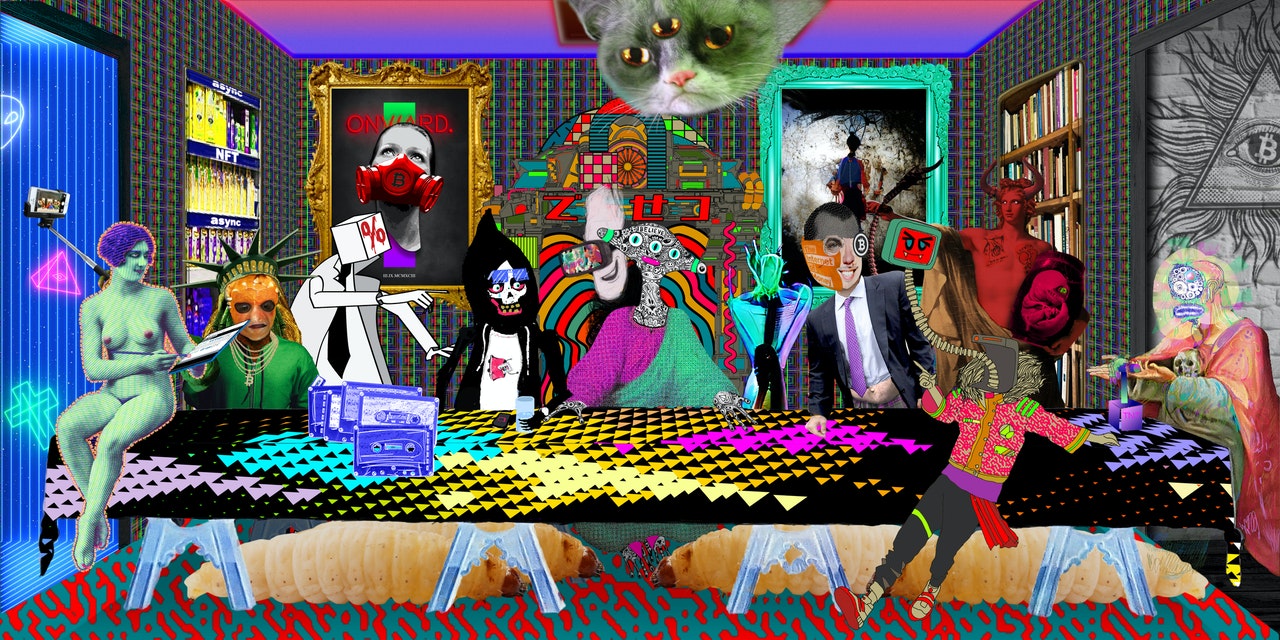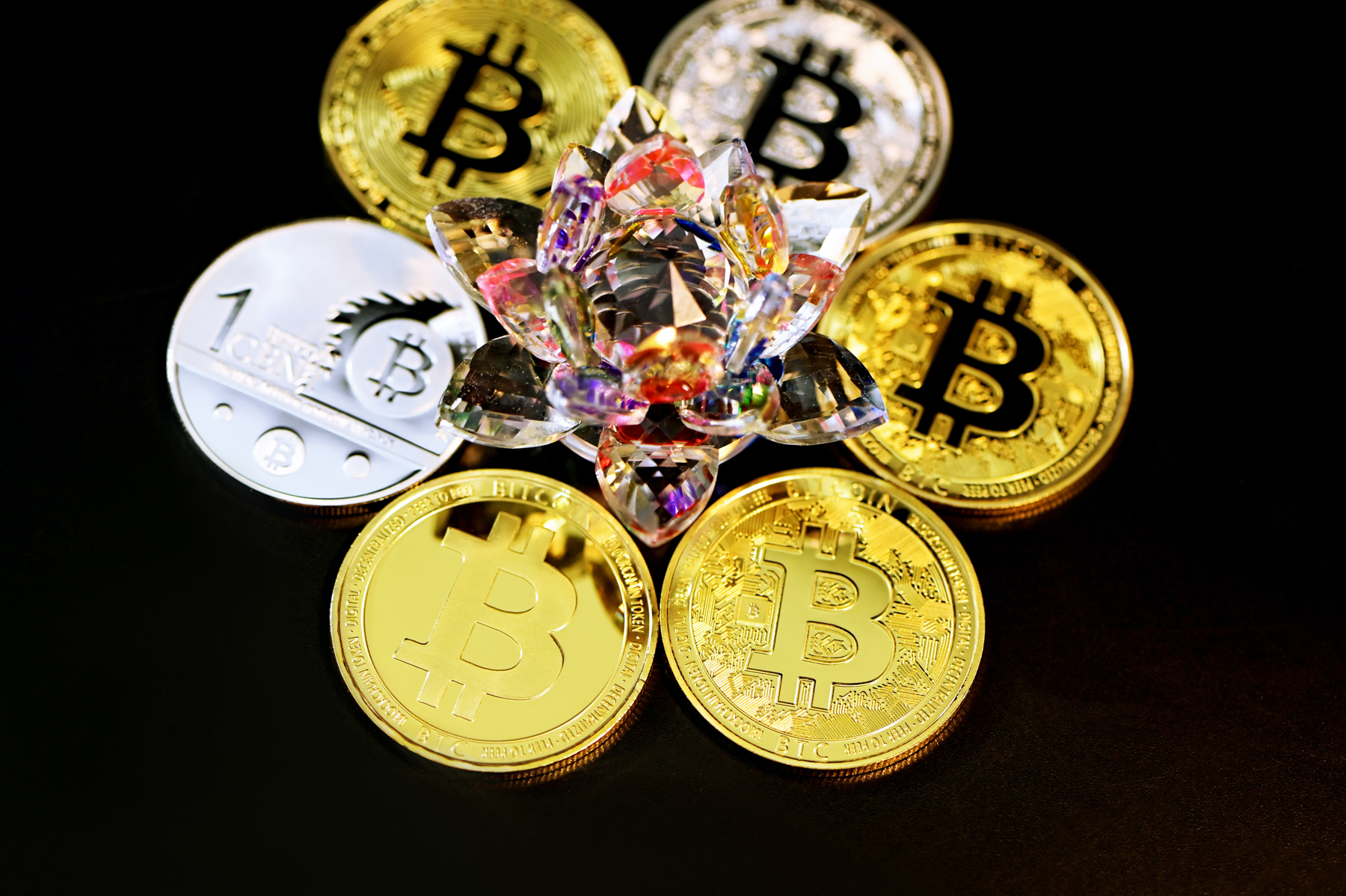There is no doubt that NFTs are hot property. A unique digital signature stored on the Ethereum blockchain, they allow ownership and authentication on a range of digital items. So, if they exist digitally, then why are people talking about physical NFTs?
The term physical NFT is new and in theory, is a physical artwork that is linked to, or has an original NFT assigned to it. But are physical NFTs the next hybrid merchandise phenomenon, or just people cashing in on the NFT trend? Read on as we discover what’s up with physical NFTs.
Physical NFT Gallery

To define the meaning of a physical NFT, we can look at two recent examples of their use. The first case study is that of Superchief, an independent, artist-run gallery in New York. On Mar. 25, 2021, it housed the first physical NFT art gallery exhibition.
Superchief has a long history of working with digital art. It opened its first digital art gallery in 2016. However, in their own words: “there wasn’t a clear way to monetize digital artwork”.
Thus, the path to championing NFTs for curators like Superchief is an obvious one. Digital artists can create revenue through crypto art sales. But that is the benefit of an NFT, not a physical NFT. So what exactly do they define them as?
We at Superchief have an opportunity to curate very popular artists that we love from various traditional mediums such as painting, illustration, photography, as well as the recently accepted and acknowledged art forms of street art and graffiti, side by side with our favorite digital artists – the youngest artform fighting to be accepted.
This implies that a physical NFT is a collective term for a wide range of different art styles, including digital art. It seems that physical NFTs, in the eyes of Superchief, could be a term used for physical artwork that has been monetized by the use of an NFT, though not exclusively.
Flipkick

Other recent mentions of them have been on the Flipkick platform. Flipkick is a service in which artists, celebrities and holders of valuable art can monetize work through physical NFTs. Their head of artists and repertoire is Ja Rule, rapper and entrepreneur.
In 2017, Ja Rule was one of the people responsible for organizing Fyre Festival. The festival sold tickets for up to $100,000 and promised the best in food, art and music. On an island in the Bahamas, it was anything but idyllic, as people arrived to find no infrastructure, rain-soaked beds and very basic food supplies.
You may ask what this has to do with physical NFTs. It is worth noting that of the eight physical NFT artists Flipkick has on its books, three of them have links to the festival.
The Three Flipkick NFT Artists

The first is Ja Rule himself. Flipkick rose to prominence when Ja Rule sold the oil painting of the Fyre Festival logo. This had sat in their office and became minted in NFT form.
This artwork was created by Tripp Derrick Barnes. He is the second of the artists touted on their website.
The sale of this logo reportedly fetched $88,648, with Ja Rule stating that he “just wanted that energy out”. The sale brought the owner the physical painting itself and an NFT version. Together, they combined to form what may be considered a physical NFT, hit both a physical and NFT aspect.
It is here that Flipkick’s notion of a physical NFT starts to become hazy. This month Ja Rule’s company decided to sell a tweet minted as an NFT by one of the festival’s participants. He is now billed as another of their physical artists, Trevor DeHass.
The tweet was posted by DeHass when he attended the 2017 festival. It showed two slices of bread, a cheese slice and a salad provided as the food for the festival. It went viral upon posting and the tweet is currently on the platform for sale at $80,000 in an NFT form.
Defining a Physical NFT
The inclusion of the tweet poses a number of questions. Can it be a physical NFT if there is not physical artwork associated with it? It is a tweet, in the same way that the Tweets on Valuables are available to buy.
Secondly, it shows that the energy Ja Rule just “wanted out” was actually quite welcome if it was going to bring publicity and cash. With no clear view of what a physical NFT is, and a platform that seems to be cashing in on a current trend using a disastrous former business venture, are they simply a gimmick?
Do We Really Need It?

In both cases, the term physical NFT is used loosely. It implies that with a physical NFT, two parts of an artwork exist. This is the physical art that created by hand, and the NFT created from it.
However, this is not always the case. The term is also used to describe pieces that have been created digitally. This could either be a picture or a tweet.
The question is, do we actually need them at all? If the final goal of an artwork is to be turned into a unique digital piece, then the physical work is part of the process. You would not expect a chef in a restaurant to serve you the oily pans and offcuts he created your meal with, so why do you need the process that made the final NFT artwork?
They could even devalue the artworks themselves. By having a digital version and a physical version, then those items no longer become unique. Would it be better to burn the physical artwork and keep the digital one, as we have already seen?
Another practical argument is that people are hedging their financial bets. Physical artworks are tangible assets, like gold, that hold value. NFTs are a riskier investment and will go up and down like stocks or shares.
By creating a concept in which art exists as a digital and tangible item, the financial risk is negated. If NFTs vanish tomorrow, the art is still around to sell or keep as an investment.
The Future of the Physical NFT
Assuming a physical NFT is the hybrid of physical and digital artwork it is a very promising way to monetize art. With recurring royalty schemes as a result of later sales, it is actually a huge benefit for the artist. By having tangible and digital assets, it offers stability unheard of in the history of creative individualism.
If used as a gimmick to make cash from failed business ventures, then the medium only has one way to go. Could greed squander a promising revenue stream for artists, before it even gets off the ground?





